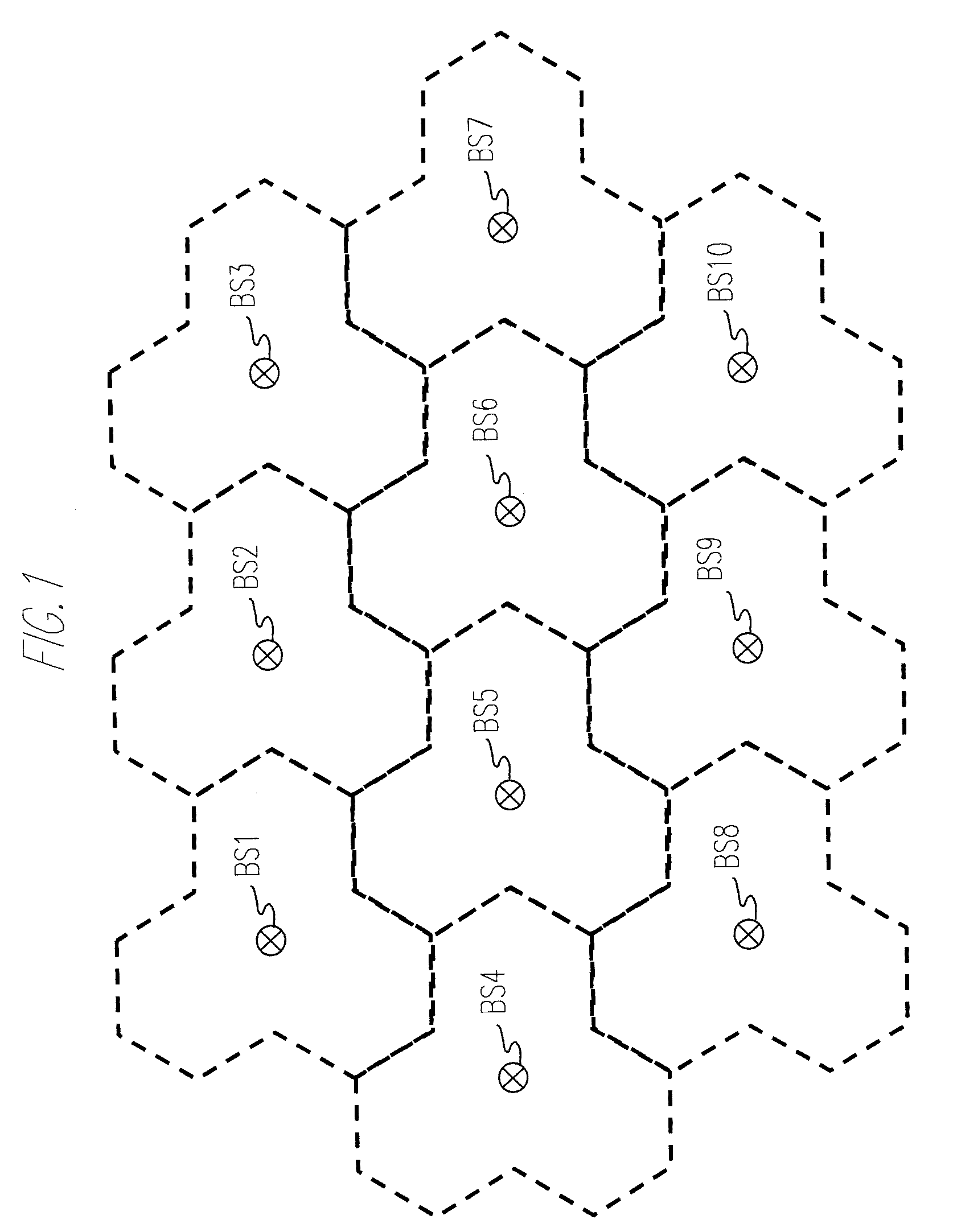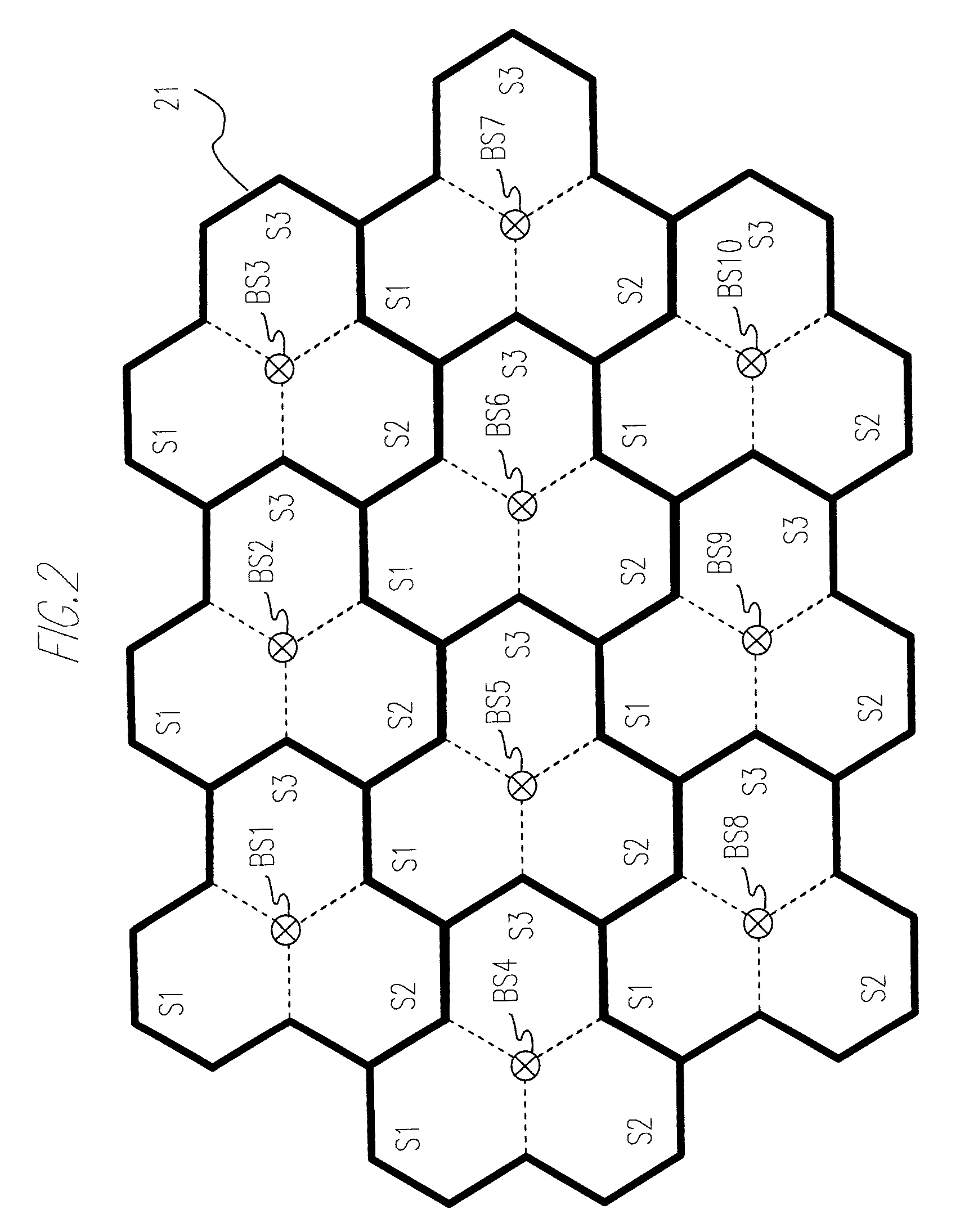Base Station Device And Cell Forming Method
a technology of base station and cell, which is applied in the direction of substation equipment, electrical equipment, network traffic/resource management, etc., can solve the problems of increasing the probability that the same frequency band and the same subchannel are used simultaneously, the inability to maintain the desired communication quality, and the inability to accept new calls, etc., to achieve the effect of improving frequency utilization efficiency and keeping communication quality
- Summary
- Abstract
- Description
- Claims
- Application Information
AI Technical Summary
Benefits of technology
Problems solved by technology
Method used
Image
Examples
embodiment
Operation and Effect of Embodiment
[0104]Herein, the operation and the effect of the FDMA cellular system in the embodiment discussed above will be described.
[0105]Each base station building up the FDMA cellular system in the embodiment uses the directional antennas, thereby forming the cells in which the small-cell 22 taking the 6-sector configuration, which does not abut on the cell of the neighboring base station, is put on the base cell 21 taking the 3-sector configuration of which the borders abut on the cell of the neighboring base station and in the internal peripheral area of the base station, respectively.
[0106]Then, the total frequency band allocated to each base station is divided by the minimum dividing count (the dividing count=5 in FIG. 4) so that with respect to the respective sector cells formed by the individual base stations, the frequency bands different from each other are allocated to the respective sector cells within the base cells 21, and the frequency bands, ...
modified examples
[0115]In the FDMA cellular system according to the embodiment discussed above, as illustrated in FIG. 2, each base cell 21 is configured by the three sector cells taking the hexagonal shape, however, another available configuration is that the base cell 21 taking the hexagonal shape on the whole, and the interior thereof is divided into three sector cells. FIG. 9 illustrates the cell configuration in this case. FIG. 9 is a diagram representing a first modified example of the cell configuration in the embodiment, and illustrates a frequency allocation of the frequencies F1 through F5.
[0116]Still another cell configuration is that the base cell 21 adopts the 6-sector configuration, while the small-cell 22 takes a 12-sector configuration. FIG. 10 is a diagram representing a second modified example of the cell configuration in the embodiment, and illustrates a frequency allocation of the frequencies F1 through F8. In this case also, with respect to the sector cells formed by each base s...
PUM
 Login to View More
Login to View More Abstract
Description
Claims
Application Information
 Login to View More
Login to View More - R&D
- Intellectual Property
- Life Sciences
- Materials
- Tech Scout
- Unparalleled Data Quality
- Higher Quality Content
- 60% Fewer Hallucinations
Browse by: Latest US Patents, China's latest patents, Technical Efficacy Thesaurus, Application Domain, Technology Topic, Popular Technical Reports.
© 2025 PatSnap. All rights reserved.Legal|Privacy policy|Modern Slavery Act Transparency Statement|Sitemap|About US| Contact US: help@patsnap.com



